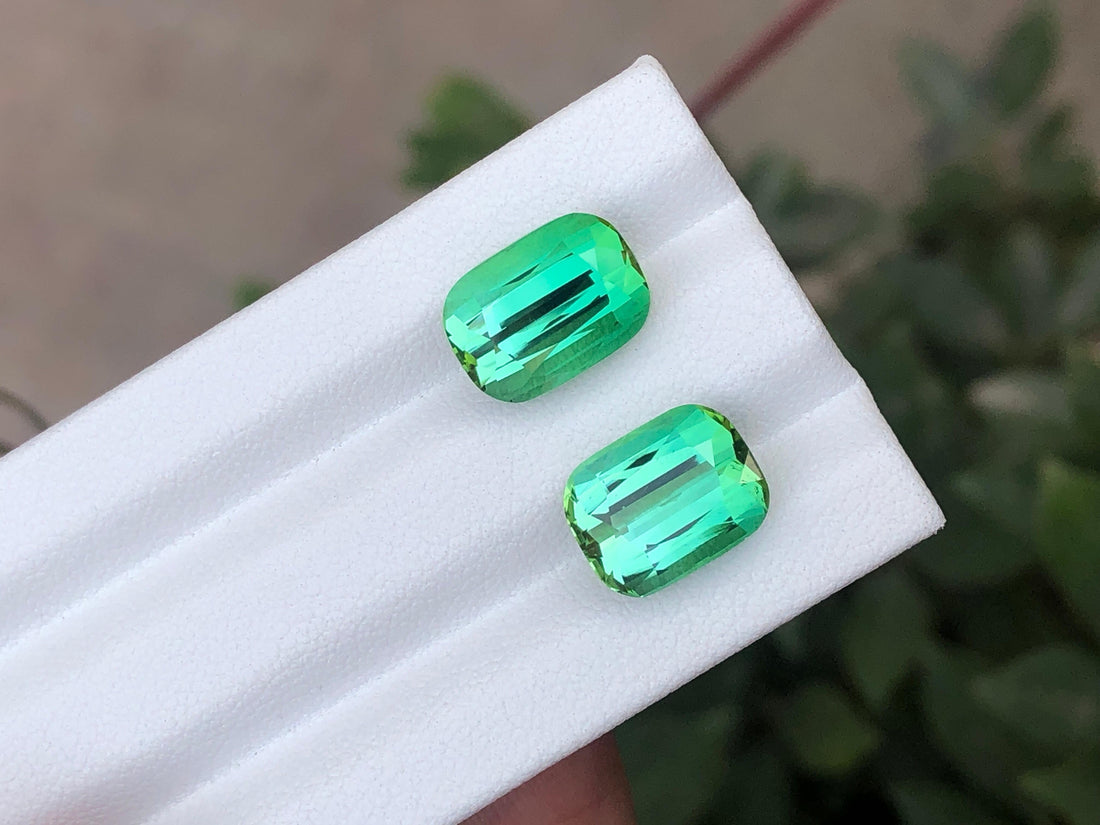
The Rich History of Tourmaline: A Gemstone of Many Colors
Share
Tourmaline, celebrated for its extensive color spectrum and unique physical properties, has a history that bridges science, tradition, and fine jewellery. At Lisbon Gem Exchange, we honour this extraordinary gemstone by offering natural, ethically sourced Afghan tourmalines—each one hand-selected from the source, without intermediaries.
Origins and Etymology
The word tourmaline derives from the Sinhalese term toramalli, meaning "mixed gems"—a reference to the stone's impressive colour range. For centuries, many tourmalines were mistaken for other precious gems: vibrant greens for emeralds, reds for rubies. It wasn't until the early 1800s that scientists began identifying tourmaline as a distinct group of minerals.
The Gemological Institute of America (GIA) now classifies tourmaline as a complex borosilicate silicate mineral, with variable chemical composition and notable crystallographic features. This variation accounts for its remarkable range of colours and physical characteristics.
A Deeper Look at Tourmaline's Chemistry
Chemically, tourmaline is one of the most complex of all gem-quality minerals. Its general formula is:
XY₃Z₆(T₆O₁₈)(BO₃)₃V₃W
Where:
X = Na⁺, Ca²⁺, K⁺, or vacancy
Y = Li⁺, Fe²⁺, Mg²⁺, Mn²⁺, Al³⁺, Cr³⁺, or V³⁺
Z = Al³⁺, Mg²⁺, Fe³⁺, Cr³⁺
T = Si⁴⁺, sometimes with Al³⁺
B = boron
V/W = OH⁻, F⁻, or O²⁻
This complex structure allows for vast substitutions, giving rise to a wide variety of tourmaline species such as elbaite, dravite, schorl, and liddicoatite—each associated with particular colour ranges. For example, elbaite includes many of the gem-quality coloured varieties used in jewellery (pink, green, blue), while schorl is typically black and rich in iron.
Tourmaline is also both pyroelectric and piezoelectric—meaning it can generate an electric charge under heat or pressure. These properties made it an object of scientific curiosity in the 18th and 19th centuries and continue to be relevant in modern technology.
According to the International Mineralogical Association (IMA), tourmaline remains one of the most chemically diverse minerals studied, and no other gemstone rivals its range of naturally occurring colours.
Afghanistan’s Tourmalines: A Legacy Carved in Stone
Afghanistan has long been recognised for its high-quality tourmaline deposits, particularly in the eastern provinces of Nuristan and Laghman. These mountainous regions are rich in pegmatites—intrusive igneous rock bodies where gemstones like tourmaline, kunzite, and aquamarine form under ideal geological conditions.
What distinguishes Afghan tourmalines is their saturation, clarity, and mineral purity. Stones from this region exhibit especially vibrant pinks, greens, and blues, often with excellent crystal formation.
More than geology, however, Afghan tourmaline mining is rooted in human tradition. Families in these remote regions have passed down artisanal mining knowledge for generations. With minimal mechanisation, miners rely on intuition, skill, and experience—qualities that lend an added layer of meaning to each stone extracted.
Despite political and logistical challenges, Afghanistan’s gemstone sector is gaining recognition. Publications like National Jeweler report that the country’s vast resources remain underdeveloped, yet full of promise. At Lisbon Gem Exchange, we work directly on the ground, building fair-trade relationships with miners to bring these rare stones to global markets with full traceability.
Tourmaline in Jewellery: Then and Now
Historically overlooked in favour of diamonds, sapphires, or rubies, tourmaline has experienced a renaissance in high jewellery and bespoke design. With growing demand for coloured gemstones—driven by a desire for uniqueness and sustainability—tourmaline’s time has truly come.
At Lisbon Gem Exchange, we supply natural Afghan tourmalines directly to designers, collectors, and gem connoisseurs. Our stones are carefully selected not only for colour and clarity, but for authenticity—untainted by treatments, synthetic interference, or inflated pricing through intermediaries.
Whether set in custom high jewellery or held as part of a curated gem collection, our tourmalines are chosen to inspire creativity and preserve integrity.
Tourmaline is a gemstone that embodies contrast and continuity: ancient yet scientifically fascinating, widespread yet geologically unique, subtle yet brilliantly expressive. Its complex chemistry, rich history, and powerful colours make it one of the most dynamic gemstones on the market today.
At Lisbon Gem Exchange, we are proud to honour this legacy with a gemstone offering rooted in ethics, expertise, and origin. From the remote mines of Afghanistan to the hands of collectors and artists around the world, every tourmaline we deliver carries a story worth telling—and keeping.



